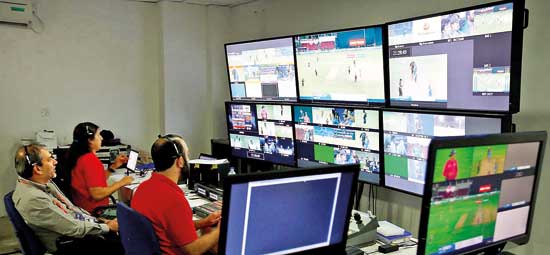The hidden effort behind live cricket broadcasts
Once media rights are secured, the next crucial element is television production, a highly intricate process that has evolved significantly over the years. Advances in broadcast technology have not only enhanced viewer experience but have also improved decision-making accuracy in the game. TV umpires rely on footage provided by the broadcast director and cutting-edge technologies such as Hawk-Eye, Virtual Eye, UltraEdge, Snicko, and Hotspot. While several other tracking technologies exist, only those endorsed by the ICC are used in official matches.

A live cricket broadcast involves a large team of professionals, with approximately 60 to 80 crew members for a bilateral series and an even larger workforce for global tournaments such as the ICC Cricket World Cup and the Asia Cup. The production team includes the director, producer, production manager, floor manager, camera operators, drone pilots, audio engineers, graphics specialists, riggers, and logistics personnel, among others. Many of these professionals work as freelancers across the globe. Production managers play a pivotal role in assembling the required crew and coordinating logistics. Some production companies own their equipment, while others hire broadcasting gear from specialised vendors. In some cases, major broadcasters manage both their production crews and equipment, streamlining the entire process.
Live broadcasting requires multiple approvals and regulatory clearances. For example, in Sri Lanka, a temporary licence from the Telecommunications Regulatory Commission of Sri Lanka (TRCSL) is necessary for satellite uplink transmission. Additionally, drone usage requires approvals from the Civil Aviation Authority and the Ministry of Defence. Given these regulatory requirements, cricket boards commence broadcast planning months in advance to ensure compliance and seamless execution.
A successful live broadcast hinges on meticulous venue preparation. At the core of the setup is the Broadcast Control Room (BCR), which serves as the nerve centre of operations. Multiple camera gantries are strategically positioned around the stadium, along with dedicated structures for run-out cameras. Specialised stump cameras and microphones capture on-field action, while satellite uplink and DSNG (Digital Satellite News Gathering) systems facilitate signal transmission. Broadcast teams typically arrive at least three days before a match to handle rigging, set up thousands of metres of cables, and conduct satellite uplink tests. Additionally, communication links must be established between the broadcast team, third umpires, and giant digital screens within the stadium.
Commentators are integral to cricket broadcasts, providing insights and analysis to audiences worldwide. In bilateral series, commentary teams usually feature representatives from both competing nations, along with a neutral commentator. Major tournaments such as the World Cup and Asia Cup offer multilingual commentary options to cater to diverse global audiences. The primary global broadcast is known as the World Feed, while the Clean Feed is a direct transmission without commercials, allowing regional broadcasters to insert their own advertisements. A crucial yet often overlooked figure in live production is the director, who makes split-second decisions to capture every ball of the game. This role demands immense concentration, as there are no breaks during a match, leaving zero room for error.
Specialist teams operating Hawk-Eye and Virtual Eye systems assist directors with ball tracking for LBW decisions, while UltraEdge and Snicko technology help detect edges and faint contacts between bat and ball. These technological advancements have significantly improved decision-making accuracy, reducing human error in umpiring calls.
A critical aspect of broadcasting is satellite transmission, which enables broadcasters worldwide to access the live feed. Satellite parameters act as the encryption key, allowing authorised broadcasters to receive the clean feed and integrate it into their platforms. Depending on the region, broadcasters then distribute the content via free-to-air TV, pay-TV, or digital streaming services.
To the average viewer, a cricket match appears as a seamless stream of live action, but behind the scenes, an enormous logistical and technical operation is in play. Thanks to advancements in technology, modern live broadcasts have a delay of less than five seconds, ensuring fans across the world experience the game in near real-time. The next time you watch a live cricket match, take a moment to appreciate the immense effort, precision, and teamwork required to bring the action to your screen.
- Gihan de Silva


